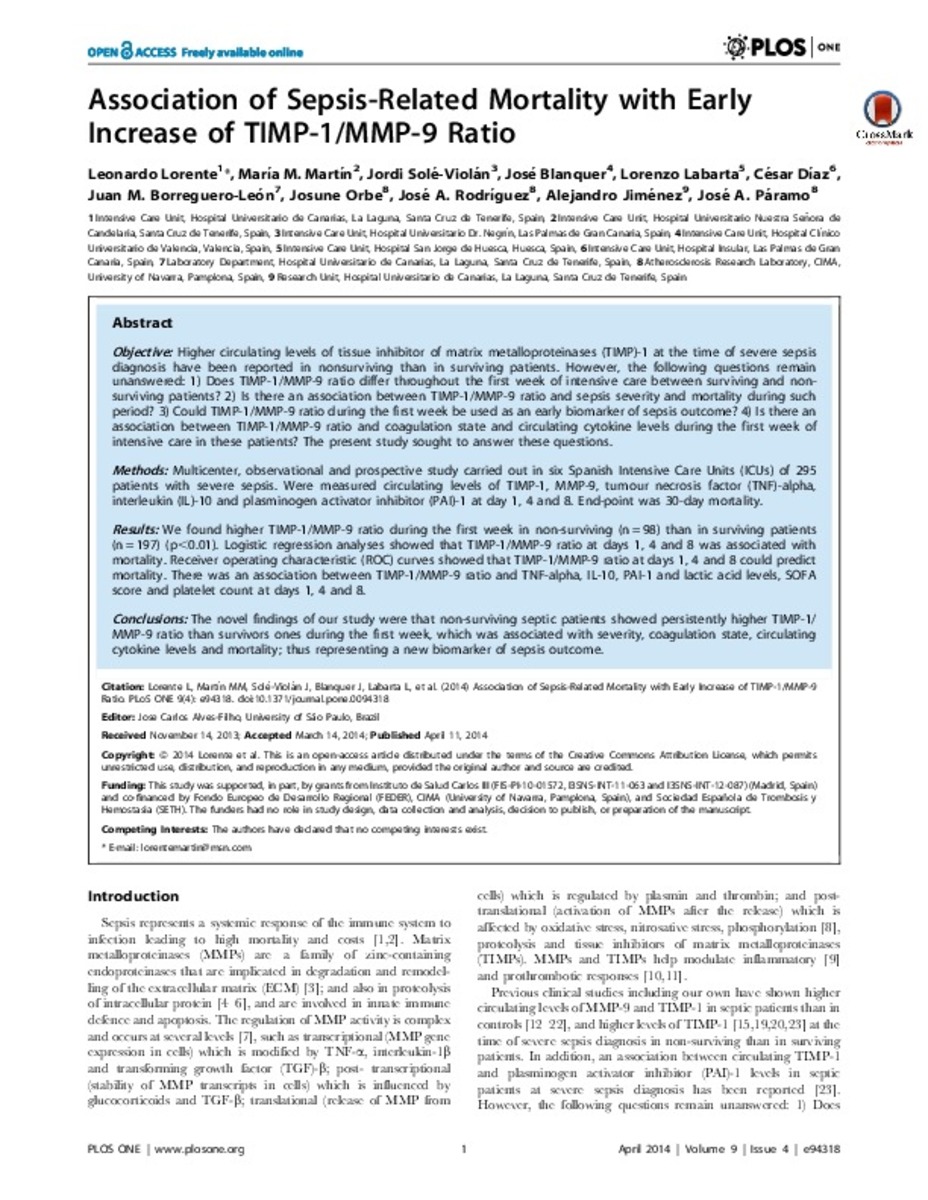Association of sepsis-related mortality with early increase of TIMP-1/MMP-9 ratio
Palabras clave :
Tissue inhibitor of matrix metalloproteinases (TIMP)-1
Sepsis
MMP-9
TIMP-1/MMP-9 ratio
Fecha de publicación :
11-abr-2014
Editorial :
Public Library of Science
Cita:
Lorente L, Martín MM, Solé-Violán J, Blanquer J, Labarta L, Díaz C, et al. Association of sepsis-related mortality with early increase of TIMP-1/MMP-9 ratio. PLoS One. 2014 Apr 11;9(4):e94318.
Aparece en las colecciones:
Estadísticas e impacto
0 citas en

0 citas en

Los ítems de Dadun están protegidos por copyright, con todos los derechos reservados, a menos que se indique lo contrario.







